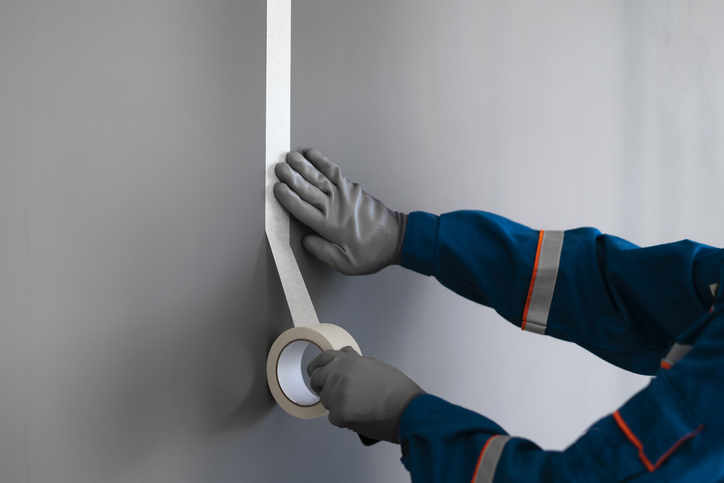One of the biggest advantages of hiring professional commercial interior painters in Diablo, CA is that they do clean work no instances of sloppiness or lack of attention to detail. These pros are experienced to produce clean and crisp edges when painting. For some painters, it even took a few years of training to achieve them flawlessly.
Having clean and crisp lines and edges are important especially in commercial painting. They give Danville, CA area businesses, commercial properties, and facilities a polished and professional look and atmosphere. While making clean paint lines between two or more colors doesn’t have to require a steady hand or special tools, it does require a certain amount of control to avoid the paint from “bleeding.”
Masking tape and painter’s tape: what is the difference?
DIY painters use whatever they have at home, such as a masking tape, to make clean lines and edges. However, professionals use a painter’s tape. Well, what’s the difference between the two?
Many people confuse a masking tape with a painter’s tape because they are similar in look and feel. However, when you do a professional painting job that requires cleanliness and precision, you should use a tape that is specifically designed for painting. You can see the big difference when you use and compare these two adhesive tapes.
A masking tape and a painter’s tape both have a crepe paper backing, which makes them easy to peel off and write on for labeling purposes. Probably the most significant difference between a masking tape and a painter’s tape is that a painter’s tape removes cleanly after the painting job is done. A masking tape, on the other hand, may leave some residues behind if left up to the end period of the painting project. Some painter’s tapes have a more robust backing compared to regular masking tapes. This special feature prevents a painter’s tape from splintering, making it easier to remove a nice piece of the strip.
Another significant distinction between a masking tape and a painter’s tape is that the latter is designed to be used with paint. It prevents the paint from bleeding into masked-off areas that you don’t want to paint, or you want to apply paint of a different color.
How to paint clean edges when painting interior walls?
Many people believe that painting is a messy job that takes a lot of effort to do. However, it won’t be an ordeal as long as you have the proper tools and follow the right procedures and techniques.
1. Fix any imperfections on the wall by filling the gaps with spackle or paintable caulk. This is a crucial step because it allows you to paint a clean line on edges that would otherwise become uneven. After applying the caulk, let it dry first. Once dried, sand off any excess of the caulk.
2. Use a painter’s tape (not masking tape) to seal and mask off all trim and edges that you don’t want to paint, or you otherwise want to paint with a different color. Make sure to press down on the tape firmly along the edges so that it would adhere to the surface completely and that the paint won’t seep under it.
3. Using a regular paintbrush, start by painting from the center to the edge of the paint. It is important to make strokes in that direction (running parallel to the edge of the tape) so that the paint won’t seep under the tape.
4. Some paints dry quickly, some do not. But for best results, let the paint dry overnight.
5. Once the paint completely dries, gently remove the tape by pulling down the end of it at the upper corner, instead of pulling up the edge of it. This will allow the tape to separate from the paint smoothly.
A painter’s edge tool can also be used for making clean and crisp edges
A painter’s edge tool is also useful to make clean and crisp edges quicker and easier. Most hardware stores and specialty paint shops sell these tools that are designed specifically to make clean and crisp edges.
After cleaning, fixing and priming the surface, fill the painter’s edge tool with paint. Then, run the tool along the edge. Make sure that you follow the directions included in the tool. Keep a steady hand as you move the tool along the edge. Depending on the type of paint or surface, it may take you at least a couple of coats to fully cover the edge.
With the proper tools and techniques, you will be able to achieve clean edges when painting interior walls. But if you still end up frustrated at DIY-ing it, the best alternative is to call professional painters such as Custom Painting, Inc.. They have the experience, training, the proper tools, and techniques to achieve clean and crisp edges on the interior walls of your commercial space.
You can contact us at 925-866-9610 or fill out this contact form to learn about our services and request a free quote for any painting needs you have.



